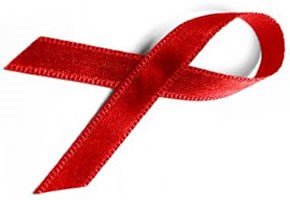BY KEITH LACEY
A young man from Greater Sudbury who contracted HIV from tainted blood when he was a toddler has become the centrepiece of a $450-million lawsuit that claims federal government employees purposely destroyed key documents surrounding Canada’s tainted blood scandal.
Chris Leblanc, now age 25, is one of four plaintiffs named in a class action lawsuit against the Attorney General of Canada, federal minister of Health, and former blood services employees accused of knowingly destroying documents.
Two of the other plaintiffs have died from tainted blood complications but their estates are named.
Back in 2000, an Ontario judge awarded Leblanc more than $660,000 in damages, but the federal government appealed the decision and the Ontario Court of Appeal overturned the decision.
Leblanc’s lawyer, Ken Arenson, has since initiated a class action lawsuit representing more than 1,100 people infected with tainted blood.
A huge part of Arenson’s lawsuit deals with the destroyed documents as the Ontario Court of Appeal ruled there was insufficient evidence before the original judge for her to have ruled in favour of Leblanc and some other plaintiffs, said Arenson.
The class action states plaintiffs have “suffered physically, psychologically and emotionally, in the form of mental distress, anger, depression and anxiety as a direct result of the defendants spoilation of verbatim records.”
It also states having those records would have allowed plaintiffs to obtain significantly better settlements and be able to prove liability and win trials in other cases.
Leblanc, also known as Christopher Farrow, contracted his illness due to hemophilia. He’s recognized as a Factor 9 hemophiliac. Because Leblanc was the first Factor 9 hemophiliac to get involved in the class action, he’s named as one of the key plaintiffs.
Leblanc was diagnosed with Factor 9 deficiency hemophilia soon after his birth on Jan. 19, 1981. Only about 14 percent of hemophiliacs in Canada have Factor 9 deficiency.
Leblanc was attending day care in Toronto in April 1985. He banged his right upper leg and began to bleed into the muscle of his thigh. He was taken to the Hospital for Sick Children and treated. The treatment included infusions of blood coagulation products.
It’s alleged Leblanc became infected with HIV between April and July of 1985.
Last Friday at the Sudbury courthouse, Leblanc and Arenson were in the court for a “change of venue application.”
Justice Patricia Hennessy heard arguments over whether Leblanc should be able to proceed in the class action here in Sudbury or have to travel for trial to Toronto.
Hennessy is expected to provide her decision on the change of venue application early in the new year.
In a 77-page statement of claim, Leblanc and other plaintiffs are part of a large group of representatives who received either of the Extraordinary Assistance Programs (EAP) from the federal government or who lost lawsuits or accepted reduced payment compared to tort damages to release their claims for compensation for HIV infection due to tainted blood, said Arenson.
The statement of claim’s allegations have not been proven in court. The federal government has denied the allegations and is fighting this class action.
Arenson said Monday he’s hopeful the trial could begin by the summer or fall of 2007.
The statement alleges Canadian Blood Committee (CBC) members knowingly destroyed verbatim records of committee meetings which contained material evidence on liability for tainted blood infections.
The class action asks all 1,100 plaintiffs receive $20,000 each in punitive and exemplary damages, another $20,000 each in aggravated damages for mental distress and a fund of $350 million be established to be settled by a trustee administered under court supervision.
The statement of claim alleges the EAP payment offered to hundreds of plaintiffs was “much below” the level of compensation for the injuries in question.
The EAP program was introduced with the realization victims were free to sue other non-federal players in the blood system, namely those in the provincial sector.
The statement claims no disclosure was made concerning the destruction of verbatim records of CBC meetings by the federal government, greatly reducing the chances of success at trial and during the appeals process.
It’s alleged CBC staffers sought and obtained permission to destroy verbatim records in May of 1989 and the defendants destroyed evidence they knew or ought to have known would be material to the success of accruing claims for injury from HIV-tainted blood products.
In the early 1990s, Leblanc and his mother received an EAP payment for $30,000 for four years or $120,000 in total.
In 1998, Leblanc’s mother hired Arenson, who initiated a lawsuit in London, Ont., alleging negligent distribution of tainted blood.
In June of 2000, several plaintiffs won a trail against the Canadian Red Cross Society (CRCS) and Madam Justice Ellen Macdonald commented missing CBC records created a “uniquely difficult” problem in the trial, but felt she had enough evidence to find liability.
Macdonald awarded Leblanc and his family $660,202, plus court costs. In late November of 2001, the judgment was reversed by the Ontario Court of Appeal.
The plaintiff’s application to take the case to the Supreme Court of Canada was refused in late 2002.
More than half of tainted blood victims have died over the past 20 years. I’m very sad someone like Leblanc hasn’t received a penny in compensation as his life was dramatically altered by the mistakes of so many others, said Arenson.
“Back when Chris was first diagnosed, life expectancy for tainted blood victims with HIV or AIDS was about five years,” he said.
“How he’s managed to battle and survive is a medical miracle.”

.jpg;w=120;h=80;mode=crop)

